Springfield Echelon 4.0 Compact 9mm Handgun, 15-Round For Sale
$629.00
The Springfield Echelon 4.0 Compact 9mm Handgun is a high-performance, reliable option for those seeking a discreet everyday carry firearm. It retains essential features of its full-sized model, but with a shorter 4-inch barrel and streamlined frame for better concealability. Its innovative Variable Interface System allows for seamless direct-mount compatibility with popular red dot sights, enabling quick and precise target acquisition. The tritium U-Dot iron sights ensure fast aiming even in low light conditions. Also, the serialized Central Operating Group within its compact frame supports a 15-round capacity to comply with state restrictions, making this handgun a top choice for tactical efficiency and ease of use.
What are the flaws of the Springfield Echelon?
The Springfield Echelon, like any firearm, can have certain drawbacks or areas for improvement. Some reported issues or perceived flaws might include:
1. **Magazine Capacity**: Compared to some competitors, it may have a lower magazine capacity in certain jurisdictions where capacities are restricted by law.
2. **Weight and Size**: It might be considered bulky or heavy by some users, affecting its suitability for concealed carry.
3. **Trigger Feel**: While subjective, some users might not prefer the trigger’s feel or pull weight and might find it less smooth compared to other models.
4. **Ergonomics**: Depending on individual hand size and shape, the ergonomics of the grip or controls may not be comfortable for every shooter.
5. **Pricing**: The price point might be seen as high for certain budgets, especially considering competing models with similar features.
6. **Aftermarket Support**: Depending on where you are, there might be limited aftermarket accessories available compared to more established models.
7. **Break-in Period**: Some users might experience a break-in period where performance is less reliable until several rounds have been fired.
8. **Recoil Management**: Depending on preferences, some shooters might find that the recoil is more noticeable compared to similar firearms in its class.
9. **Sight Options**: Users might find the stock sights inadequate for their needs, necessitating additional purchases for upgrades.
It is important to note that individual experiences may vary, and some users may not encounter any flaws at all. Always test-fire a firearm if possible to determine personal fit and satisfaction.
What is special about the Springfield Echelon?
The Springfield Armory Echelon is a semi-automatic pistol introduced by Springfield Armory that offers several notable features, making it special:
1. **MODULARITY**: The Echelon features a versatile and modular design, allowing users to customize the pistol according to their preferences with interchangeable backstraps and grip modules.
2. **OPTICS-READY SLIDE**: It includes an optics-ready slide that accommodates a variety of red dot sights, enhancing aiming capabilities and adaptability to shooter needs.
3. **ADAPTIVE GRIP TEXTURE**: This design feature offers a comfortable and secure grip by adjusting the texture according to handling pressure.
4. **FLAT-FACED TRIGGER**: The Echelon is equipped with a flat-faced trigger that provides a consistent and clean trigger pull, enhancing accuracy and shooter control.
5. **SAFETY FEATURES**: The pistol includes enhanced safety features, such as an ambidextrous slide stop and an adaptive trigger safety, contributing to safe handling practices.
6. **DURABILITY**: Constructed with high-quality materials, the Echelon is built for durability and longevity, capable of enduring extensive use and harsh conditions.
These features make the Springfield Echelon a versatile and appealing option for both personal defense and professional use.
Is there a compact Springfield echelon?
No, there is no known concept or entity widely recognized as a “compact Springfield echelon.” If you could provide more context or clarify your question, I would be happy to try to assist further.
Is the Springfield Echelon drop safe?
Yes, the Springfield Echelon is designed to be drop safe. It features a safety mechanism known as the Central Operating Group (COG), which includes an internal design intended to prevent accidental discharge if the firearm is dropped. However, as with all firearms, it is essential to follow the manufacturer’s safety guidelines and handle the gun responsibly.
Can you dry fire a Springfield echelon?
Yes, you can dry fire a Springfield Echelon safely. However, it is recommended to use a snap cap or dummy round for prolonged dry fire practice to protect the firing pin and other internal components. Always ensure the firearm is unloaded and follow all safety precautions when dry firing.
What year did the Springfield Echelon come out?
The Springfield Echelon was released in 2022.
Can you conceal carry the Springfield Echelon?
Yes, you can conceal carry the Springfield Echelon as long as you comply with the laws and regulations regarding concealed carry in your jurisdiction. The Springfield Echelon is designed as a compact firearm, making it suitable for concealed carry. Always ensure you have the appropriate permits and follow local laws related to carrying firearms.
Why did the Springfield Armory shut down?
The Springfield Armory, a significant historical arms manufacturing facility in Springfield, Massachusetts, shut down in 1968 primarily due to a combination of factors. The decision was part of a broader effort by the U.S. Department of Defense to reduce costs and streamline operations. Advances in manufacturing technology and changing military needs also contributed to this decision. Additionally, the transition to more modern, private defense contractors who could produce weapons more cost-effectively played a role in the closure. The armory’s functions were redistributed to other facilities, and its closing marked the end of over 200 years of government arms production in Springfield.
Where are Springfield Armory Echelon guns made?
Springfield Armory Echelon guns are made in the United States.
Does the Springfield Echelon have a safety?
Yes, the Springfield Echelon does have a safety feature. It includes a blade safety on the trigger, which is a passive safety mechanism that helps prevent accidental discharge. Additionally, the Echelon has other safety features such as a striker status indicator and a loaded chamber indicator. However, it does not have an external manual safety lever.
What gun does a cop use?
The type of gun used by a police officer can vary based on the country, region, and specific law enforcement agency. However, a common handgun used by many police departments in the United States is the Glock 19. Other popular models include the Sig Sauer P320, Smith & Wesson M&P, and the Beretta 92. Each department chooses firearms based on factors like reliability, ease of use, and specific requirements of the officers.
What is a striker-fired pistol?
A striker-fired pistol is a type of semi-automatic handgun that uses a striker mechanism to fire the cartridge. Unlike hammer-fired pistols, which use a traditional firing pin that is struck by a hammer to ignite the primer, striker-fired pistols have the firing pin or “striker” integrated into the slide, where it is cocked back and released to strike the primer directly when the trigger is pulled. This design often allows for a consistent trigger pull, a simpler internal mechanism, and can contribute to a low-profile slide, making the pistol relatively easy to maintain and reliable. Striker-fired pistols are popular in both law enforcement and civilian markets, with models such as the Glock 17 and Smith & Wesson M&P being well-known examples.
What were the disadvantages of the Gatling gun?
The Gatling gun, an early type of rapid-fire weapon and a forerunner of the modern machine gun, had several disadvantages:
1. **Weight and Mobility**: The Gatling gun was heavy and cumbersome. It required a team of horses or men to transport it, limiting its mobility on the battlefield.
2. **Complexity and Maintenance**: The mechanism was relatively complex for its time, making it prone to malfunction. It required skilled operators for assembly and maintenance, which could be problematic in the field.
3. **Manual Operation**: The original Gatling gun required manual cranking to operate, which limited its rate of fire compared to later fully automatic weapons. It also meant that the firing rate was dependent on the operator’s speed and endurance.
4. **Ammunition Supply**: The gun’s rapid rate of fire consumed ammunition quickly, necessitating a large and reliable supply, which could be logistically challenging during operations.
5. **Vulnerability**: While the Gatling gun could deliver devastating firepower, it was also a large target and relatively immobile once positioned, making it vulnerable to counter-attacks and artillery fire.
6. **Deployment Limitations**: Its size and operational requirements limited how and where it could be deployed effectively, often restricting it to defensive positions rather than offensive operations.
7. **Cost**: The Gatling gun was expensive to produce, which limited its widespread deployment during its time.
These factors, combined with the evolution of more advanced technology, eventually led to the Gatling gun being phased out in favor of lighter, more efficient automatic weapons.
What were the flaws of the M1 Garand?
The M1 Garand, while revolutionary for its time as the standard-issue semi-automatic rifle for the U.S. military during World War II and the Korean War, had several flaws:
1. **Weight**: Weighing around 9.5 to 11 pounds (depending on attachments), the M1 Garand was relatively heavy, which could make it cumbersome for soldiers, especially during long marches or in combat situations that required agility.
2. **Capacity**: The M1 Garand used an 8-round en-bloc clip. Once the clip was emptied, it was automatically ejected with a distinctive “ping” sound, which could potentially give away the shooter’s position. Moreover, partially spent clips could not be easily topped off, limiting flexibility in ammo usage.
3. **En-bloc Clip System**: The en-bloc clip system was less convenient compared to detachable magazines, as it required the entire clip to be loaded at once. This made it challenging to quickly reload if only some rounds had been fired.
4. **Complexity and Cost**: The production of the M1 Garand was relatively complex and costly compared to bolt-action rifles, which affected manufacturing and logistics.
5. **Jamming Issues**: While generally reliable, the M1 Garand could experience jamming under certain conditions, particularly when not properly maintained or when exposed to harsh environmental elements.
6. **Gas System Sensitivity**: The gas-operated mechanism could be sensitive to different ammunition loads, potentially causing reliability issues if non-standard ammunition was used.
7. **Recoil**: The recoil on the M1 Garand was significant, which could lead to shooter fatigue over extended use.
Despite these flaws, the M1 Garand was highly regarded for its firepower, reliability, and accuracy, providing a significant advantage over bolt-action rifles of the era.
What were the flaws of the Ross rifle?
The Ross rifle, used primarily by Canadian forces during World War I, had several notable flaws:
1. **Jamming and Malfunctions:** The most significant issue was its tendency to jam, especially in the muddy and harsh conditions of the trenches. The bolt action mechanism was sensitive to dirt and debris, which frequently led to malfunctions.
2. **Complex Design:** The rifle had a complicated design and was challenging to disassemble and reassemble. Soldiers often found it difficult to maintain the weapon in the field.
3. **Overheating:** The Ross rifle was prone to overheating after continuous firing, which could affect accuracy and reliability.
4. **Incompatibility with British Ammunition:** The rifle was designed to favor tight tolerances for accuracy, but this made it incompatible with the standard-issue British .303 ammunition, which varied slightly in size. This incompatibility resulted in additional jamming and extraction issues.
5. **Structural Weaknesses:** The rifle’s extractor was particularly fragile, and when it broke, spent cartridges could not be removed, rendering the rifle useless until repaired.
6. **Length and Weight:** The rifle was relatively long and heavy, which made it cumbersome for trench warfare and close combat situations.
Due to these issues, the Ross rifle was eventually phased out in favor of the more reliable British Lee-Enfield rifle.
| Frame Finish | Black |
|---|---|
| Frame Material | Polymer |
| Sights | Tritium / Luminescent Front, Tactical Rack U-Dot™ Rear |
| Overall Length | 7.25" |
Be the first to review “Springfield Echelon 4.0 Compact 9mm Handgun, 15-Round” Cancel reply
Related products
Springfield Echelon 4.0 Compact 9mm Handgun
Springfield Echelon 4.0 Compact 9mm Handgun
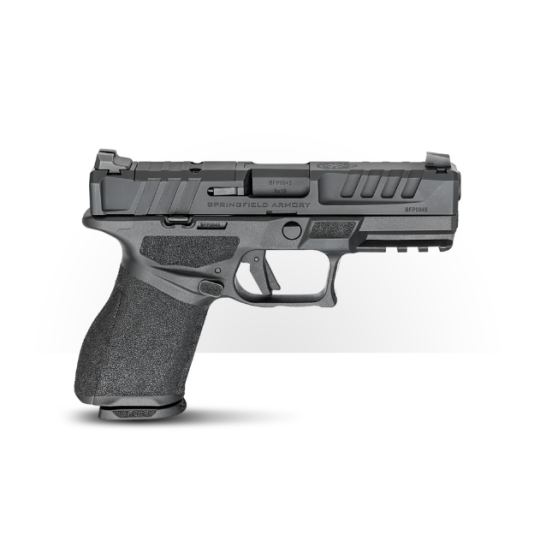
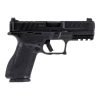
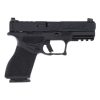
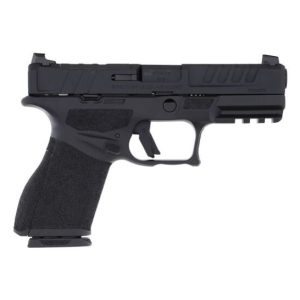
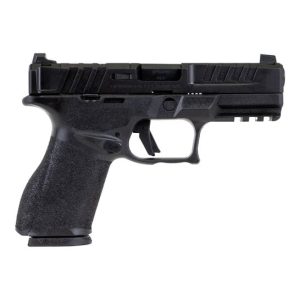
Reviews
There are no reviews yet.